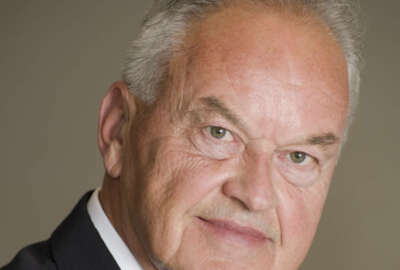
Beware the flatulence police
California has a new law limiting the amount of gas cows can pass. Senior Correspondent Mike Causey says Uncle Sam tried it, on humans, a few years back.
It is often said that as California goes, so goes the nation. When the biggest state gets a cold, the rest of us eventually sneeze. Thanks in large part to the influence of Hollywood and its sheer size, California is often a trendsetter for the 49 other states. When experts try to predict premium changes in the federal health program (the FEHBP), they often use the California state employees program, CALPers as their model.
Because of its influence on the rest of the nation, some federal government workers are watching how their counterparts at the state level will handle their next mandate from Sacramento: Monitoring cow flatulence in the Golden State. Checking and reducing gas emissions of Holsteins, Guernsey’s as well as those of beef stock such as Herefords and Angus cattle.
A new law, signed last week by Gov. Jerry Brown, requires California dairy farmers and ranchers to reduce the flatulence of their cows by 40 percent. Brown hailed the new law, which is also aimed at other emissions such as black carbon from diesel trucks that are to be cut in half by 2030. The state will run the program.
It has long been known that cows, and sheep, have this, uh, problem, which some say threatens the ozone layer. The issue is not so much the problem itself but, uh, solving it. That will be left to state employees in the inspection and agriculture fields. A committee is likely to be formed — if it doesn’t already exist — to set up inspection guidelines and reduce or capture at least 40 percent of the cow’s wind-breaking activity as the cows are unlikely to help.
Reuters reported that one of the technologies that may be tapped for the cows is a “methane digester, which turns the gas into usable fuel.” Naturally, the equipment is expensive, which worries California farmers who produce two of every 10 quarts in the nation.
If the mandate is adopted by other states, it may eventually go national. That would mean that various federal inspectors, engineers, scientists and designers might be required to impose and enforce methane emission controls on federal herds of bison, and hundreds of thousands of wild horses in national parks or on federal land.
If the bovine emissions control program becomes federal law, civil servants in half a dozen agencies could be asked track, police and administer the program. Fortunately, the federal government has some experience in this kind of emissions control.
In 2013, the Social Security Administration began monitoring a compulsive wind-breaking worker whose presence created “a hostile work environment” for fellow employees. The employee blamed it on digestive problems and offered to turn on a fan if he felt an attack coming on. The worker was monitored for over three months, with about 60 “incidents” reported and noted in the substantial file on the case. Copies of the file, with names blacked out, were sent to various news media outlets including Federal News Radio. A letter of reprimand for “conduct unbecoming” was issued by a mid-level manager but later withdrawn by the administration.
Meantime, check your job description, just in case.
Nearly Useless Factoids
Governor LePetomane, Mel Brooks’ character in the western “Blazing Saddles,” was named for the popular turn-of-the-century French stage actor Joseph “Le Pétomane” Pujol.
Source: IMDB
Copyright © 2025 Federal News Network. All rights reserved. This website is not intended for users located within the European Economic Area.
Mike Causey is senior correspondent for Federal News Network and writes his daily Federal Report column on federal employees’ pay, benefits and retirement.
Follow @mcauseyWFED
More Commentary




